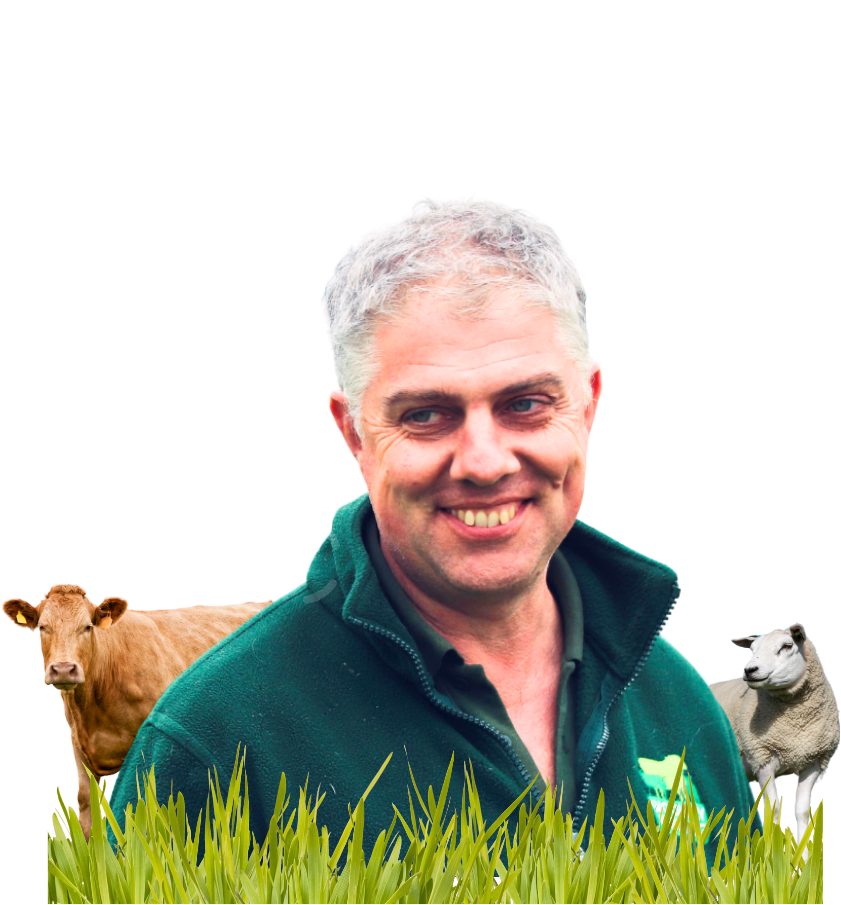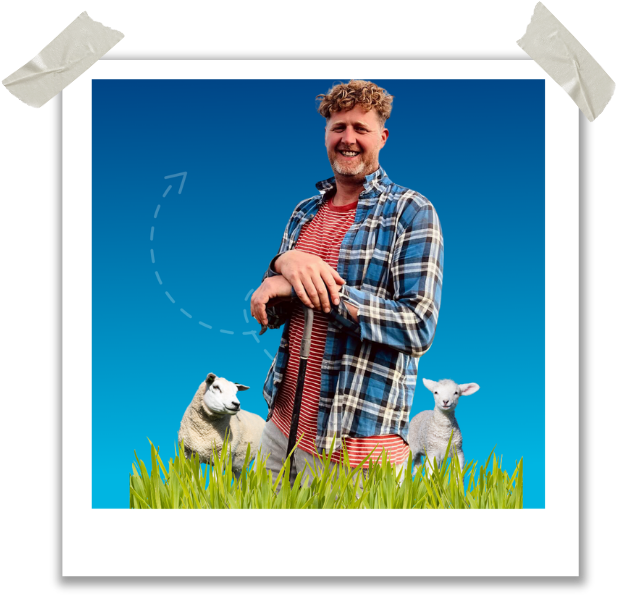FARMER STORY
Hayden Woolley
The Albynes | Bridgnorth, England
An ambition to farm as efficiently as possible has led Hayden Woolley to investigate the world of commercial wool shedding genetics. Hayden now works with animal performance data on a daily basis, where information is everything.

FARMER STORY
Hayden Woolley
The Albynes | Bridgnorth, England
An ambition to farm as efficiently as possible has led Hayden Woolley to investigate the world of commercial wool shedding genetics. Hayden now works with animal performance data on a daily basis, where information is everything.


On-farm livestock technology
In 2020, I bought an eWeigh which is a Bluetooth enabled weigh head that connects to load bars. This then allows weights to appear directly onto your phone or tablet when iLivestock is installed. My farming operation has gotten a lot more complicated recently but it's all managed with iLivestock, eWeigh and more recently an auto drafter.
iLivestock app
To get a movement licence, I just tap in the app, scan or attach the tag numbers and email. It is very intuitive and easy, so even I can do it. I like the fact that I no longer have to do the movement licences after work. We all have a smartphone and in each vehicle there is a charger, and we have EID readers that plug into the same USB chargers. All the devices plug into all the vehicles, so even if you go in a tractor or lorry, you can load sheep, do a licence, unload and it is all done. Saving a lot of time. It has also revolutionised my medicine book.
"Initially I used iLivestock to analyse my commercial flock, which led me to radically change breeds. It has enabled me to start work on a large scale wool shedding genetics project."
Sheep performance recording
I recently started performance recording with Signet breeding service, which helps commercial and pedigree livestock farmers make performance gains and associated genetic improvement. I have recorded sheep for the last three years and have about 1600 to record this year. I plan to record 3000 next year and just couldn't do it without iLivestock, it’s now integral to my business. When lambing in the fields, I just have a smartphone or tablet to collect data, and if for some reason I lose or damage my smartphone, I will not lose everything as it’s all backed up in the cloud. I’m still learning how it all works, but my decisions are now based on facts and data I collect on the farm using iLivestock.
When paired with an EID reader it makes everything even quicker than before. As it is integrated directly into iLivestock I can add, personalise and, most importantly, analyse the information I gather. To breed better flocks essentially, with the traits that I want for my sheep. Most of the land I farm is permanent pasture that has had a lot of sheep over the years. It’s not good quality grazing. Therefore, I want to breed an animal that will hold its condition and perform whilst in this system. To have my ewes rear lambs better and to get a healthier, happier and more profitable flock.
Ewes are easily identified in the field with large management Zee ‘flag tags’ cross referenced to EID. We tag lambs at birth, recording weight, sex, birth date, maternal ability and any problems etc. Parentage is pre-populated onto the mothers individual animal record from the tupping groups or AI groups and then 8 weeks later, we record weight again. At weaning ewes and lambs are weighed again. Gradually, it builds up a picture of which animals are efficient and which are not. Then, by sending all of this information to Signet, the sheep are ranked. This data can be exported, analysed on spreadsheets and imported back into iLivestock, so you can draft animals depending on their indexes or any other filters you need to apply. If you are breeding your own replacement ewes, it is really rewarding to identify and breed from your high index animals and watch your flock further improve.
"I recently started performance recording with Signet. I have recorded sheep for the last three years and have about 1600 to record this year. I plan to record 3000 next year and just couldn't do it without iLivestock, it’s now integral to my business."
Working with sheep data
Information is everything. I probably always had the information available, but it is a lot easier to find it now with iLivestock in your hand. This year, we fitted more ewes with management tags and with my smartphone in my pocket, I can go around the field, tap in a ewe number and instantly see how she has performed. I even record ewes stuck in fences or cast, and it’s surprising how often the same ewes re-offend! As you go about your everyday farming business, you gather data very easily. It is surprising how the picture builds up and how the data carries forward year on year. It is just a swipe here and a tap there, you don’t really notice doing it, because you always have your smartphone!
Wool shedding genetics project
Initially I used iLivestock to analyse my commercial flock, which led me to radically change breeds. More recently iLivestock has enabled me to start work on a large scale wool shedding genetics project. I have formed a business called Low Footprint Lamb UK in partnership with Ian McDougall, a vet with a local artificial sheep breeding service business. Ian travels the world regularly with his work and has a lifetime’s knowledge of worldwide sheep genetics. He has a real passion for sheep production alongside the environment, and has identified genetics on his travels that he thinks could be useful to UK farmers as we try to balance food production and future climate change targets.
He has identified and imported wool shedding genetics from around the world with great production traits and low methane characteristics and we are trialling them in my flock. I am using iLivestock daily to analyse the different breeds that have recently arrived on the farm. This is a project I had wanted to do for a long time, and it brought a completely new level of interest, which is certainly making me learn new things. In the future, we would like to breed and sell rams. Hopefully the best ones possible with a low environmental footprint. In order to do that, Ian and I have to put in the time and due diligence at the start to establish what makes a good breed. That is what our wool shedding genetics project is all about.
If you can identify and use your absolute best animals, you can move forward and raise the performance of the rest of your flock. We are hoping to produce commercial maternal and terminal rams, without wool that can lamb outdoors unassisted, thrive on grass or forage crops and reduce farm labour requirements to absolute minimum. I don’t think I would have been able to attempt a project like this without iLivestock, and I am very grateful for the help they have given me over the last three years. I have certainly had my money's worth of support and technical help and I wish Jamie, Ewen and their team continued success with their future developments.
"Information is everything. As you go about your everyday farming business, you gather data very easily and it’s surprising how the picture builds up and how the data carries forward year on year."



